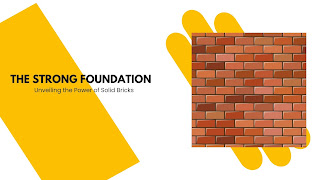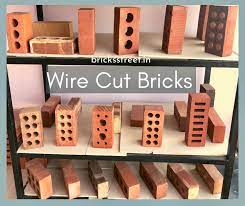The Strong Foundation: Unveiling the Power of Solid Bricks
When it comes to constructing a durable and reliable structure, the foundation is the most crucial element. It serves as the backbone upon which the entire edifice stands. While various construction materials have been employed over the centuries, one material that has stood the test of time is the humble brick. Solid bricks have been the cornerstone of countless buildings, showcasing their unmatched strength and resilience. In this blog, we will delve into the power of solid bricks as a foundation material and explore their significance in creating enduring structures.
- A Brief History of Bricks in Construction
The history of solid brick usage in construction dates back to ancient civilizations like Mesopotamia, where the first-known bricks were made from mud and straw. As civilization progressed, the techniques and materials evolved, and bricks were formed using clay and baked in kilns to achieve more robust and durable structures. The Roman Empire further advanced the art of brickmaking, introducing various shapes and sizes to suit diverse architectural needs.
The Industrial Revolution in the 18th and 19th centuries revolutionized brick production, allowing for mass production and standardization. Bricks became a common building material across the globe, used in residential, commercial, and industrial construction. Over time, the technology and design have improved, but the fundamental strength and resilience of solid bricks have remained unchanged.
- The Anatomy of Solid Bricks
Solid bricks are typically made from clay, shale, or concrete and are molded into a rectangular shape before being fired in kilns to achieve their robustness. The high-temperature firing process vitrifies the clay particles, resulting in a solid, dense structure that can withstand considerable compressive forces. The standard dimensions of solid bricks are 9" x 4.5" x 3", making them easy to handle and stack during construction.
- Unparalleled Strength and Durability
One of the primary reasons solid bricks are preferred for foundations is their unmatched strength. When compared to other foundation materials like stone or concrete blocks, solid bricks offer exceptional compressive strength, making them ideal for supporting the weight of a structure. The dense composition and firing process provide solid bricks with incredible load-bearing capacity, ensuring that the foundation can withstand the test of time and various environmental challenges.
- Enhanced Thermal Insulation
In addition to their strength, traditional bricks also possess excellent thermal properties. Due to their high density, they have a higher heat capacity, which means they can absorb and store heat more effectively than lightweight materials. This property helps in maintaining a stable indoor temperature and reduces the energy required for heating and cooling, making solid brick buildings more energy-efficient and environmentally friendly.
- Resistance to Moisture and Fire
Solid bricks exhibit low porosity due to their dense structure, which makes them highly resistant to moisture penetration. This characteristic is of utmost importance in foundation construction, as it ensures the stability of the structure above. Moisture-resistant foundations prevent the risk of dampness, mold growth, and structural degradation, thereby increasing the lifespan of the building.
Additionally, solid bricks have excellent fire resistance. The high firing temperature during production renders them non-combustible and able to withstand high temperatures without losing their structural integrity. This property is crucial for safety, as it reduces the risk of fire spreading through the foundation and compromising the overall structure.
- Sustainable and Environmentally Friendly
The production of solid bricks is relatively eco-friendly compared to other construction materials. Clay, the primary raw material, is abundant and easily accessible. The manufacturing process also requires less energy compared to other materials like concrete, which involves the extensive use of cement. Additionally, solid brick structures have a longer lifespan, reducing the need for frequent replacements and minimizing construction waste.
- Versatility in Design and Construction
Solid bricks offer architects and builders a wide array of design possibilities. Their standard dimensions allow for consistent and straightforward construction, enabling efficient use in load-bearing walls and foundations. Additionally, solid bricks can be easily combined with other materials like reinforced concrete to enhance the overall structural strength and create versatile architectural designs.
- Economical and Low Maintenance
Considering their long lifespan and durability, solid brick foundations are a cost-effective choice in the long run. They require minimal maintenance, and any repairs needed are generally easy and straightforward. As a result, building owners save on maintenance costs over the years, making solid bricks an economically viable foundation material.
Conclusion
The strength and resilience of solid bricks have made them an enduring choice for foundations across the ages. Their ability to withstand immense compressive forces, resist moisture and fire, and offer excellent thermal insulation make them an exceptional material for constructing strong and enduring structures. Moreover, the eco-friendly nature of brick production and their low maintenance needs add to their appeal as a sustainable foundation option.
Source: Bricks Street




Comments
Post a Comment